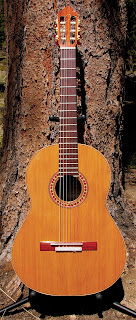Posts
Showing posts from November, 2014
Disston Rip Saw, Stanley Scrub Plane, Douglas Fir Guitar Top
- Get link
- X
- Other Apps
1860's Greek Revival House: My Work Is Done!
- Get link
- X
- Other Apps
Hernandez y Aguado Style Guitar - Douglas Fir Top, Mahogany Back and Sides
- Get link
- X
- Other Apps


